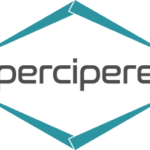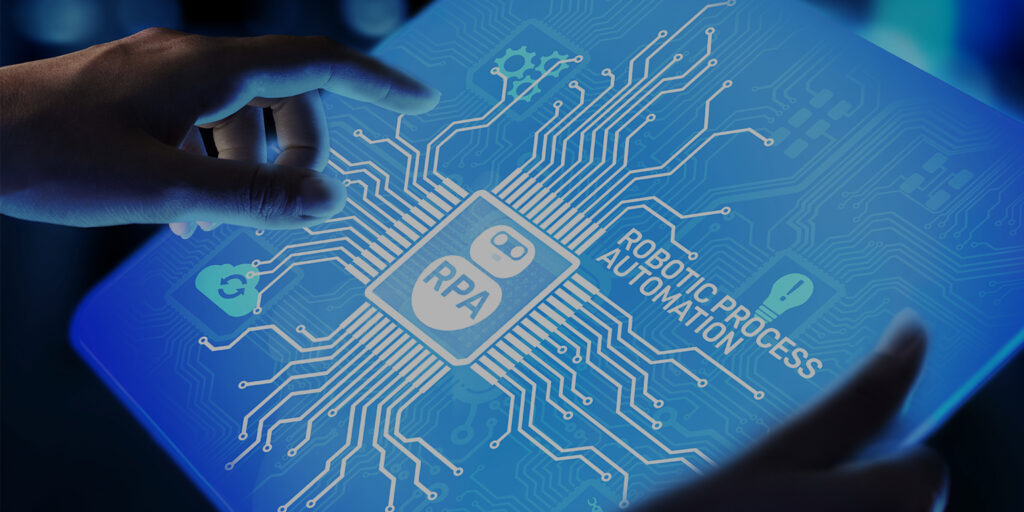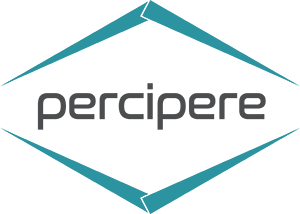The COVD-19 situation, despite its enormous human costs, has also been a moment of contemplation. In a world already battling a consistent rise in the communicable and non-communicable disease burden, a pandemic overwhelming the healthcare delivery mechanisms poses disturbing questions. Lancet’s global estimates reveal that the rise in chronic diseases and the failure of public healthcare infrastructure are already brewing a perfect storm for implosion. Should a tragedy of an epic proportion strike again, would old ways of healthcare administration be enough for organizations to sustain optimum clinical outcomes, especially across the underserved regions of the world?
Healthcare is an industry unlike any other, residing at the intersection of humanitarian demands, business imperatives, and hawkish regulatory oversight. For a predominantly knowledge and skill-driven sector, various processes across its value chains are still orchestrated manually or through ad hoc applications bought off-the-shelf. This approach to tackling the ancillary workloads alongside running core processes is tedious, time-consuming, and error-prone, creating much toil in the clinical environments.
What are some common industry pain points?
Researchers have found that the medical staff spends approximately 6 hours of a typical 11 hour workday on EHR data entry roles, with at least 25% of tasks stretching beyond the office hours. Further, 42% of the physicians are vulnerable to an early burnout in their career owing to an over-exposure to clerical chores. Consequently, such disproportionate allocation of workforce bandwidth on low-value tasks deviates the expert focus from what they do best, resulting in poor business uptakes, lack of flexibility, huge case pendency, and longer turnarounds. It all boils down to suboptimal patient outcomes and institutional bottom-line performance.
For instance, manual patient onboarding and appointment scheduling are complex processes with a significant downside for healthcare institutions and service consumers. It involves collecting and assimilating patient data such as personal information, insurance details, diagnosis, and location and aligning the patients’ convenience with the doctor’s availability. While it ties up valuable resources on front desk jobs, this study found that the approach lacks personalization and access, with patients spending eight minutes on average to schedule appointments, including 30% of the time spent on hold. Further, while both structured and unstructured data collected from various channels is essential for delivering deep patient insights, if managed manually, its sheer volume can overwhelm the data-entry staff.
Similarly, managing the health insurance claims cycle manually, from data input, processing, evaluation, and appeal, currently eats up a significant chunk of a health administrator’s time. In fact, it takes about 24 minutes on average to check the patient’s eligibility and claims status, making it difficult for even large teams to keep up with the influx of cases. Also, medical billing is another area that entails continuous staff involvement in tracking the service and material charges incurred across multiple departments. The fact that 80% of such bills contain errors does not augur well for the reputation of a medical institution. Besides these day-to-day operational challenges, healthcare providers are under continuous regulatory focus, and organizations operating the traditional ways may be hard-pressed to meet the modern auditing and regulatory expectations.
The incentive to discontinue conducting business the old ways is quite apparent as CAQH estimates that cutting manual interventions from healthcare administration can help the industry to trim 33% or $13 billion from its operational expenses. Unsurprisingly, healthcare decision-makers worldwide are in a desperate race to stay competitive by embracing process automation.
Why is RPA important?
In the high-stakes world of healthcare that pivots on the mandate of first time-right interventions, the importance of seamless processing and accountability of the outcomes can hardly be overemphasized. Nevertheless, the long-standing prediction by WHO that the global healthcare worker shortage may reach a staggering 12.9 million by 2035 and rising incidence of diseases related to modern lifestyle and erratic weather patterns are compelling healthcare leaders worldwide to be apprehensive about sustaining the quality of service. Indeed, more than ever, the sector is facing daunting resource and cost optimization challenges, caught in an intense balancing act between shrinking payments, optimizing outcomes, improving patient experience, and ensuring innovation credentials.
In respite, Robotic Process Automation (RPA) accelerates the monotonous, time-consuming, and repetitive tasks within the clinical ecosystem that are essential to enable the outcomes, unleashing new levels of precision and efficiency. In fact, a study by McKinsey found that across various healthcare functions, the sector manifests over 36% automation potential.
Today the healthcare organizations are perching on vast volumes of data ingested daily through lab information systems, clinical applications, third-party portals, radiology information systems, insurance portals, scheduling applications, HR applications, and ERP systems. Rule-based RPA bots, operating on such data, can mimic the responses of a human operator at the user interface level, performing iterative tasks with more incredible speed and accuracy while disengaging the valuable workforce bandwidth for more strategically rewarding roles. Unsurprisingly, in one industry research, Protiviti found a growing consensus among healthcare insiders that investments in RPA solutions are critical to futureproofing, with its benefits transcending much beyond just cost savings. Further, considering the proliferating RPA use cases in healthcare, Gartner assesses that by as early as 2023, 20% of all patient interactions will be driven by RPA constructs, a radical increase from the 4% at present.
So, what are the apparent benefits that automated healthcare processes bring to the table that has convinced at least half of the healthcare providers in the US to invest in RPA within the next three years, setting a precedent for their industry peers worldwide?
What are the benefits of RPA?
Streamlined front-office support: According to the Healthcare Information Management Systems and Society, more than 86% of the mistakes in the healthcare industry are administrative. Medical errors claim 4,00,000 lives every year in the US alone, with Harvard Medical Review attributing 70% of such events to human negligence. Also, patient misidentification wastes 30 minutes per shift on average for clinicians.
Clearly, medical front-desk administration needs to evolve, and RPA provides an excellent tool to facilitate the transformation. RPA bots can intuitively capture and assimilate information on diagnostic reports, physician’s availability, location, financial statements, and insurance position to come up with a possible appointment slot for the patient. Further, bots can be configured to send appointment reminders to patients through email bursts and notify during the physician’s unavailability. Similarly, RPA systems can facilitate internal communications between medical staff on the status of the appointments and automate the patient database management. While increasing speed, the use of RPA solutions can dramatically enhance the precision of medical data entry and records handling. The RPA bots can also generate detailed reports on the patient’s medical history and channelize them directly to the authorized clinical personnel, preserving confidentiality.
Reliable legacy systems integration: Legacy systems operating across the clinical landscape poses a severe roadblock in the effective digitalization of the healthcare services and can be a massive liability from the security and connectivity standpoint. However, with RPA, such system integration challenges can be navigated with ease. Because integration using RPA offers several advantages over APIs and integrated applications that are less flexible and involve substantial deployment cost.
Unlike APIs that require complex coding, RPA solutions operate by mimicking human interaction with applications. Further, while API deployment and operations require dedicated skillsets, RPA offers a user-friendly and cost-effective solution that can be scaled as per business needs. Also, the risk of data loss or security concerns are minimized while employing RPA to integrate legacy solutions, allowing administrators complete control over access to sensitive information.
Improved cost optimization: The medical sector is currently under the dual mandate to sustain bottom-line performance and make quality healthcare affordable for the public. Unsurprisingly, the industry’s net profit mostly hovers in the single-digit percentage. Here automation of processes can bring significant leverages in optimizing the operational expenses of healthcare providers. Research conducted in the US found that intelligent automation can save upto $214 per person, per year with an RPA bot costing only a fraction of a human FTE. Some institutions also managed to realize upto 200% ROI in the very first year of RPA deployment. Such savings add up to $70 billion, trimming 2% of the annual national healthcare expenditures and adding to the net profit of the healthcare providers.
Improved healthcare outcomes: Today, more than 70% of the deaths worldwide are caused by non-communicable ailments like diabetes, cardiovascular dysfunctions, cancer, and respiratory illnesses. Nevertheless, much of these can be prevented if detected at an early stage. Leveraging Machine Learning, intelligent bots can analyze huge volumes of medical data within seconds that would otherwise take hours or days through manual interventions, thus ensuring the likelihood of more accurate diagnosis and giving the physicians a significant head start in tailoring effective treatment strategies. For instance, while a pathologist usually takes ten days to conduct a biopsy, automation can handle thousands of biopsies within seconds. Further, research suggests that Machine Learning has proven advantages over human pathologists in delivering prognosis for cancer.
Increased employee satisfaction: The healthcare sector is highly knowledge-driven, and employee satisfaction matters in retaining the best talent on the job. While physicians mostly spend half of their time doing paperwork, a Forbes study found that 92% of companies saw improved employee satisfaction after RPA deployment. The medical sector is no different. By automating repetitive, clerical workloads, the healthcare professionals can finally focus on what they have been trained to do: caring for patients to the best of their abilities, adding more meaning to their roles.
RPA Adoption by Process
Insurance claims processing: Efficient claims processing and management can be a complex function, requiring a series of repetitive, yet necessary tasks around patient documentation and data entry. Health insurance claims administrators must find ways to cut costs, improve service quality, and enhance customer satisfaction while ensuring operations’ overall financial stability. Here, medical facilities typically facing large claims volumes can switch from manual to automated processing, unlocking obvious value. In context, while processing using RPA costs only $3 per claim, the overhead can surge upto $28 per case if done by a human operator.
The process can be accelerated by automating the daily transfer of claims cases into an FTP server. On detecting new cases, an RPA task launches and combines the files, securely transferring them from the health information management system into the claims management system. There, an RPA solution can parse through the files, extract data and process them for approval. On denial, it can flag such exceptions for review and generate audit reports for the administrators on the conclusion of the batch jobs.
Regulatory compliance: Healthcare providers must operate information systems, abiding by a broad spectrum of regulatory requirements, including HIPAA (Health Insurance Portability and Accountability Act). Failing to be HIPAA compliant has profound cost implications for a medical institution, besides regulatory and reputational risks. For instance, in 2019, the University of Rochester Medical Center (URMC) was ordered to pay $3 million in compensation to the Office of Civil Rights (OCR), entailing HIPAA violations around the theft of encrypted devices.
While confidential patient information is stored across various system landscapes, RPA simplifies HIPAA compliance for healthcare data administrators. RPA bots can be used to enforce Role-Based Access Management (RBAC), ensuring that only authorized personnel have access to specific information. RPA solutions can also be configured to maintain detailed information access logs that can be made available to the auditor and cyber forensics on demand, facilitating probes into incidents.
Infection management: Medical establishments like hospitals, nursing homes, surgical centers, ambulatory clinics, and rehabilitation centers are constantly battling to control and minimize the incidence of healthcare-acquired infections (HAIs) that patients get while undergoing treatment. The Centers for Disease Control (CDC) estimates that HAI is responsible for more than 1.7 million infections across American hospitals, resulting in at least 99,000 deaths every year.
While manually conducting such broad-based infection surveillance and control can be highly complex, RPA can be used to help the nursing staff to orchestrate infection control protocols intuitively. It covers automated triaging, tracking, and screening of protocols within the ambit of regulatory and CDC guidelines, automated inventory and patient flow management and self-monitoring of patient care plans, including triggering of alerts on the breach of safety thresholds.
Post-discharge care: Treatment journeys are often multifaceted and complex. While a healthcare establishment can ensure the best medical facility for the patient during the length of stay, the net treatment outcome is determined by a seamless discharge process and whether the patient is following up regularly with the physicians, leading upto recovery. This study presented at the American College of Surgeons (ACS) virtual Clinical Congress 2021 found that while the length of stay after surgical procedures has dropped between 2014 to 2019, there was a 12% increase in various post-discharge complications across several surgical specialties in a sample size of 5,38,000 Americans. Researchers concluded that healthcare providers need better systems to pinpoint and manage post-discharge complications.
While manually doing this can be incredibly labor-intensive, RPA bots can allow medical institutions to achieve scalability and ensure that post-discharge guidelines are adequately followed. They can send prescription pick-up reminders, schedule, and notify upcoming physician appointments, and even alert the healthcare provider if the patient needs assistance. With RPA integration, medical institutions can reach out to patients with greater empathy in managing post-discharge complications and improve their HCAHPS (Hospital Consumer Assessment of Healthcare Providers and Systems) scores through enhanced customer experience.
Account settlements: In an era where healthcare is becoming more and more personalized, institutions must consistently monitor treatment costs to ensure operational viability. Tracing the costs of the services consumed like medical tests, doctor fees, and wardroom charges for individual patients can be a cumbersome job. Further, the administrative staff can be pushed to the limits in generating recurring invoices and ensuring that the patients do not fall behind the payment schedule resulting in an account receivables pile-up. Here account settlement workloads can be delegated to RPA bots, that can intuitively determine treatment costs and keep track of the payments. It can eliminate delays and human errors from the billing cycle, accelerating accounts settlements.
How can Percipere bring in the value?
As illustrated, robotic process automation is an exceptionally agile and adaptive technology that can deliver much value for healthcare providers and patients, improving clinical outcomes and profitability. Nevertheless, considering the risks prevalent in typical clinical environments, the safe and reliable deployment of RPA requires the assistance of a subject matter expert and an experienced healthcare process integrator. It should be able to scope the business requirements, validate the opportunities, estimate the baseline operating costs to ensure affordability, standardize the workflow and procedure, implement, and deliver hyper care as required.
To ensure this, we at Percipere have partnered with UiPath, a global leader in RPA platforms, to deliver on the exceptional promises of healthcare automation. We are a full-cycle RPA innovator, trusted industry-wide for infusing efficiency, speed, and precision into legacy healthcare technology landscapes with minimum intrusion. As an end-to-end RPA innovator, Percipere’s interventions range from Advisory, Consulting, Implementation to Incident Response, backed by well-laid plans and an efficient change management culture to help you find the remedies for the most pressing healthcare operational challenges.
Author: Akshay Farde, Lead Manager (RPA)





